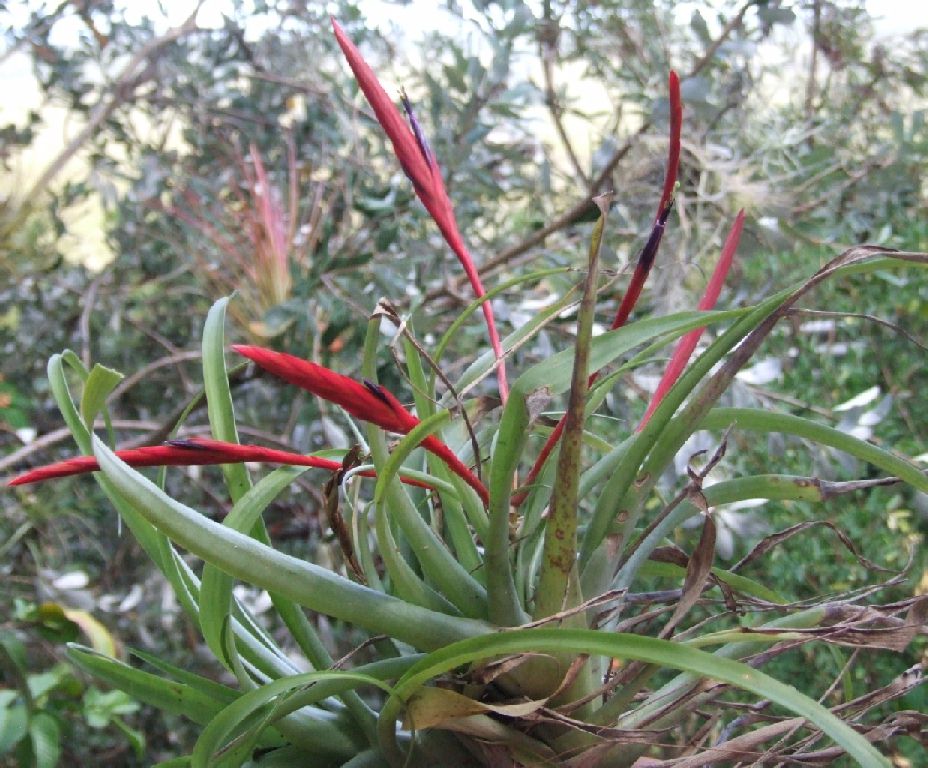
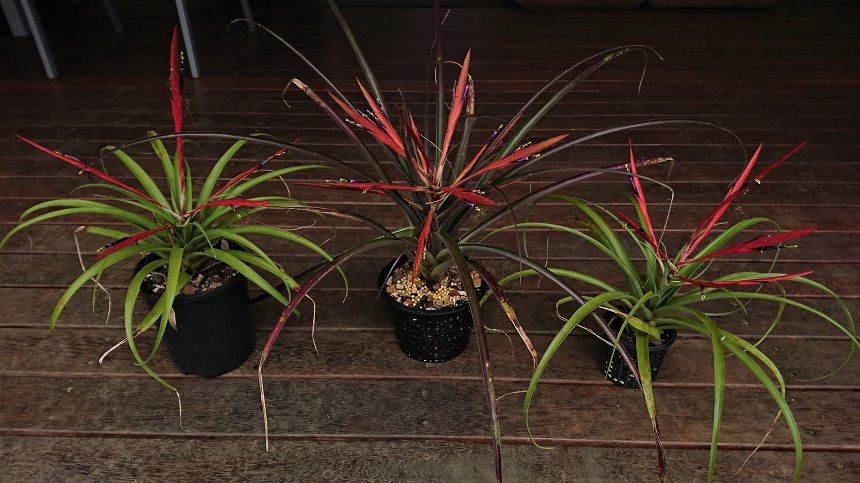
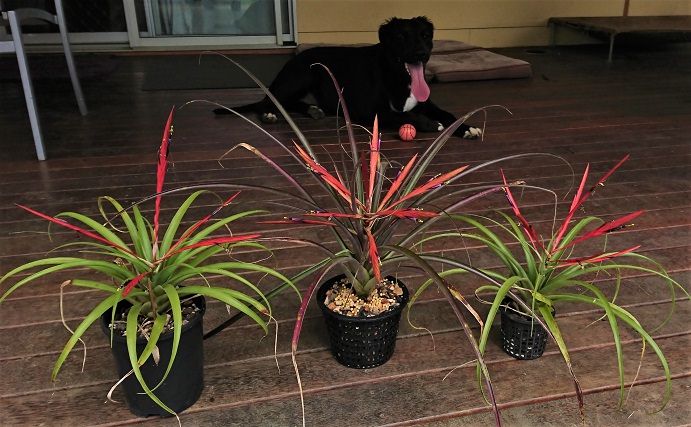
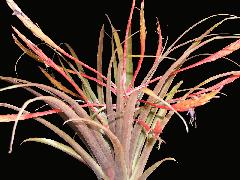
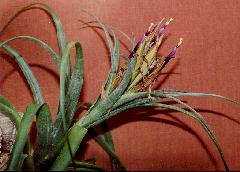
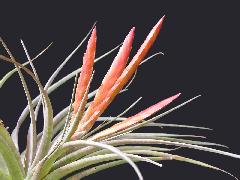
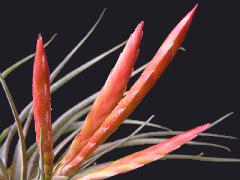
Ken Woods 10/06. |
Bob Hudson thinks 'ROMA' 12/12. |
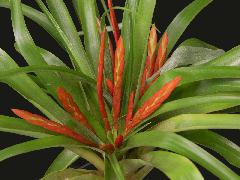
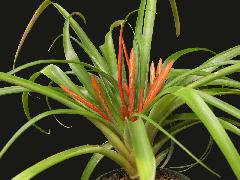
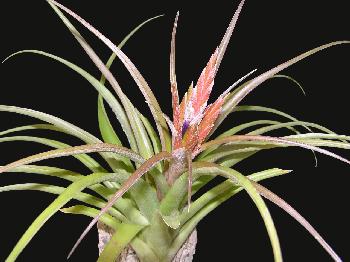
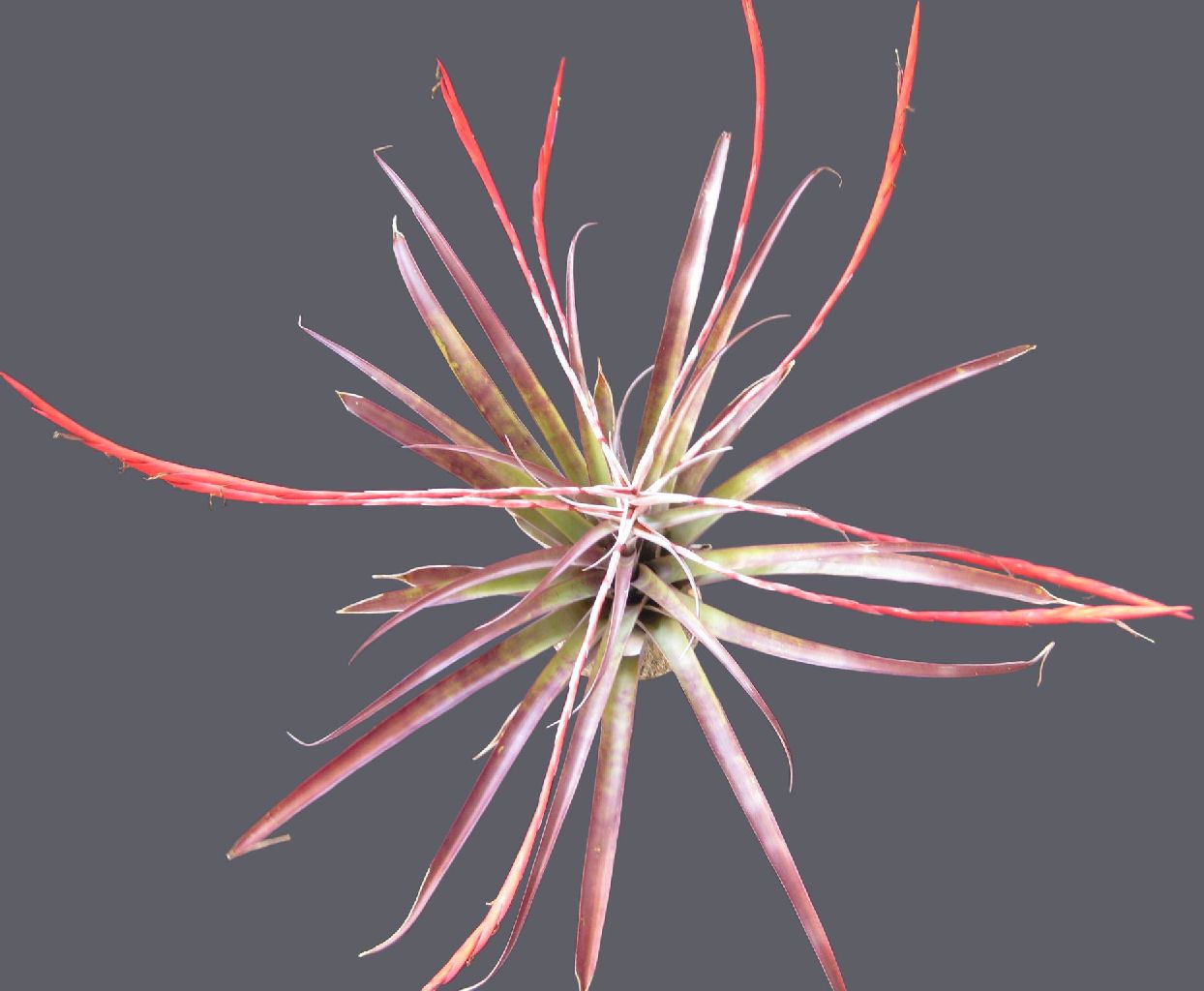
Ken Woods 05/11. |
Bob Hudson 12/12. |
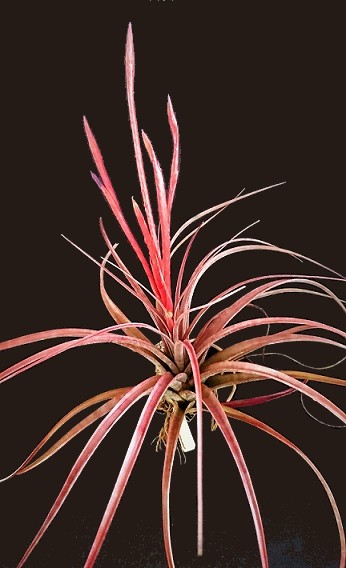
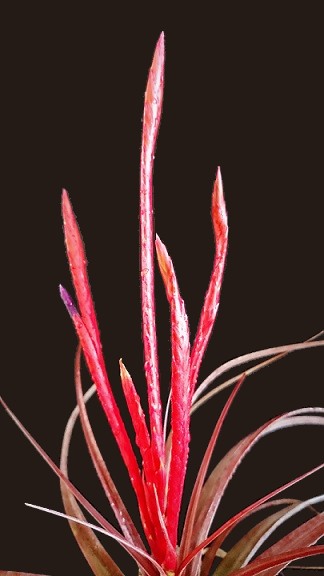
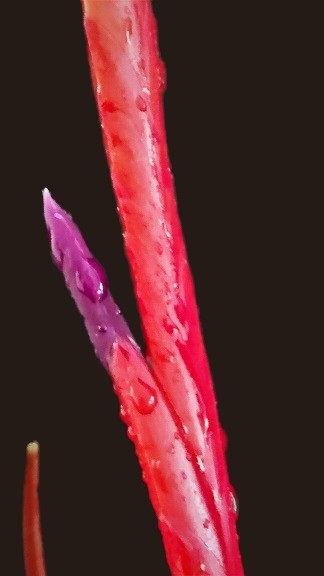
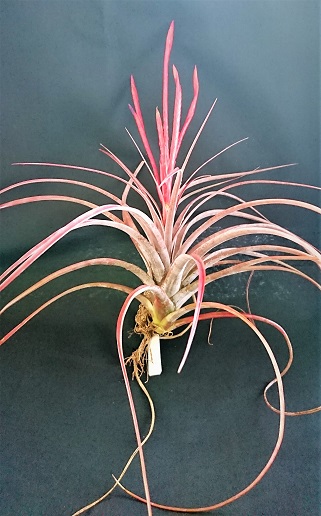
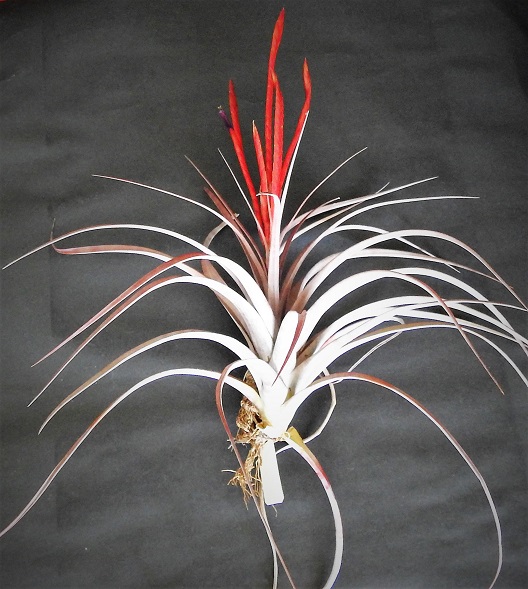
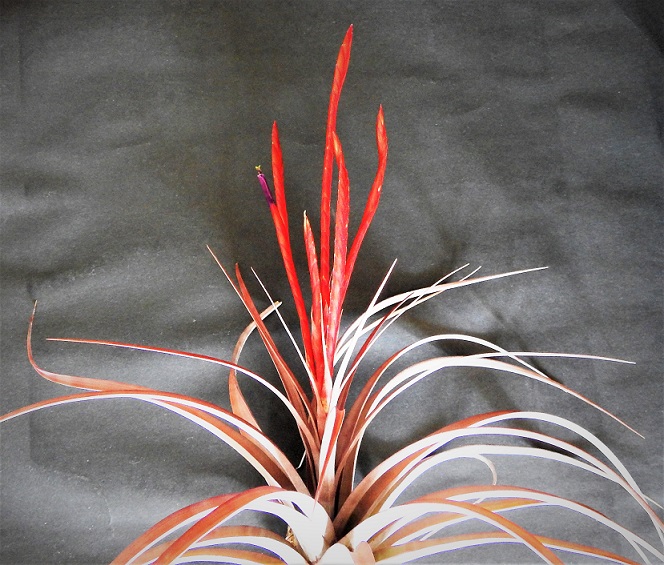
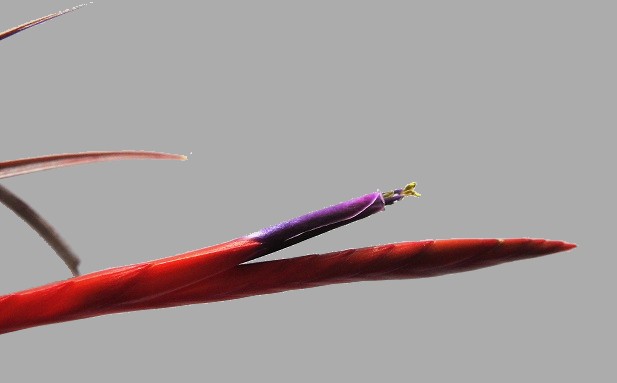
flabelata red form in centre |

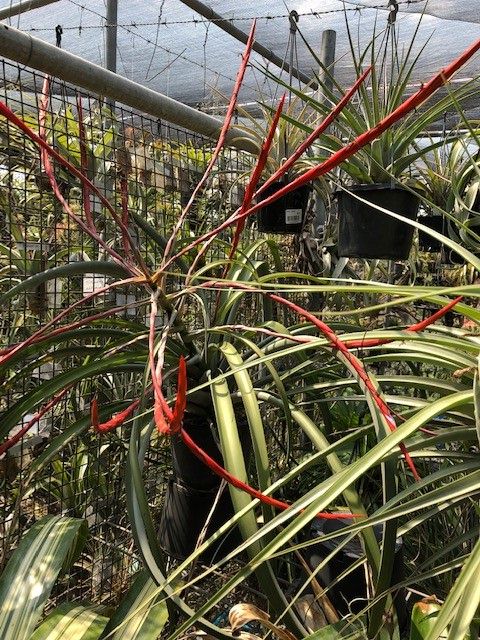
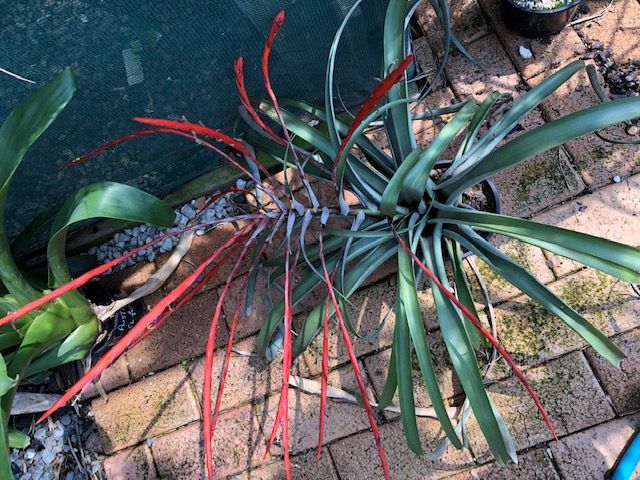
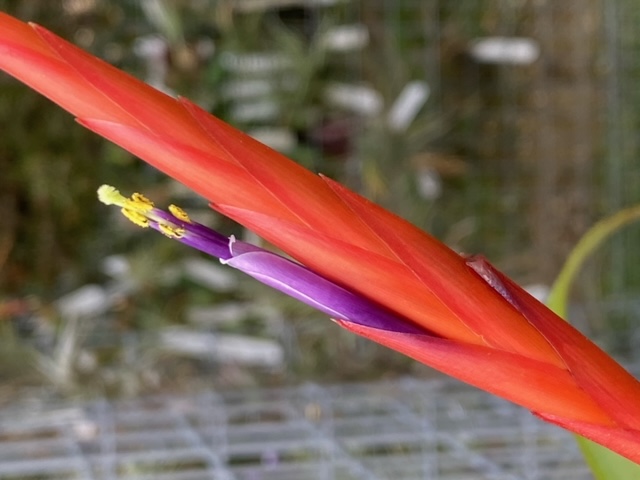
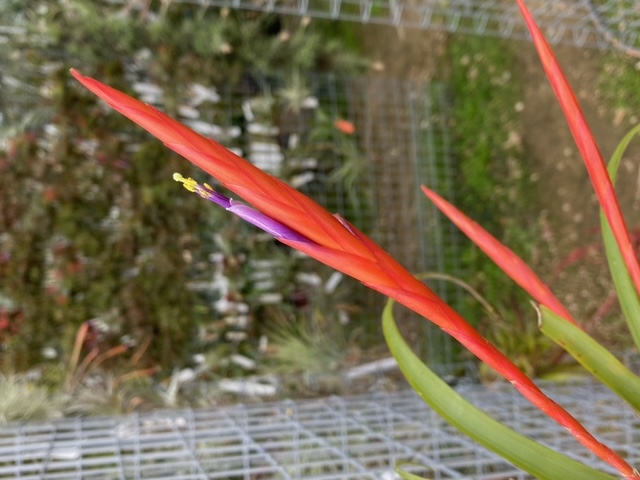
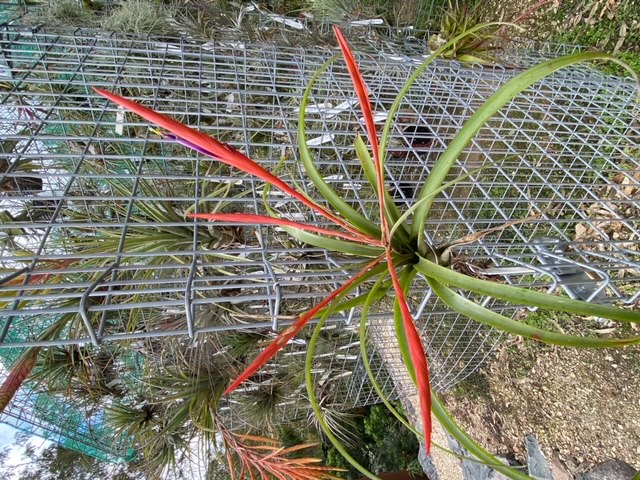
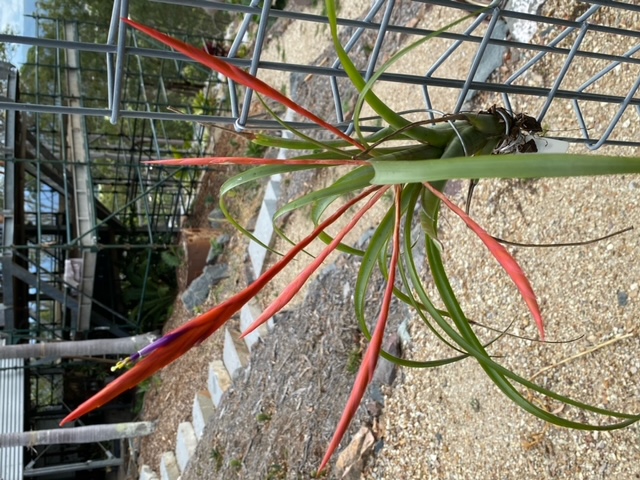
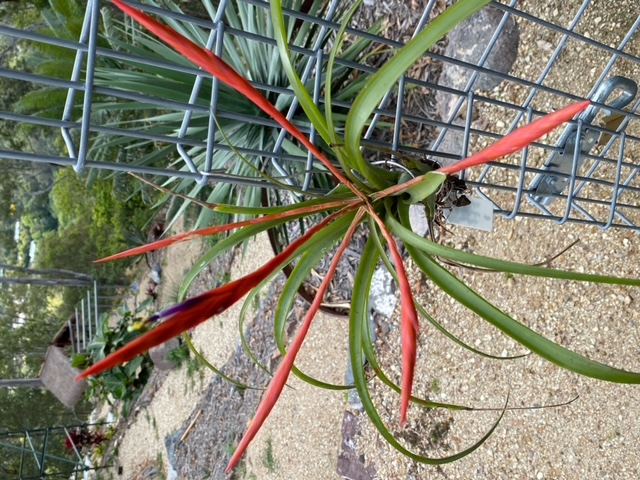
Tillandsia flabellata var flabellata
Leaves red, to 35 cm long.
Type. Salvin s n (K, holotype, GR photo), Barranco Rondo, Volcan de Fuego, Sacatepequez-Chimaltenango boundary, Guatemala, Oct 1873.
DISTRIBUTION. Epiphytic in forest, 225-1500 m alt, southern Mexico, Guatemala, Salvador.
MEXICO. CHIAPAS: Siltepec, 9 Jul 1941, Matuda 4379 (LL); 13 Mar 1945, Matuda 5278 (GH, LL, US); Chicomuselo, 14 Jul 1941, Matuda 4510 (GH); Escuintla, 23 Jun 1945, Matuda 5994 (GH, US); Ocozocuautla, 11 Apr 1947, Moore 2564 (BH, US); Monserrate, 3 Mar 1950, MacDougall s n (US); Tuxtla Gutierrez to El Sumidor, 29 Apr 1952, Moore 6318 (BH, US); 6 Apr 1957, Foster & Van Hyning 2966 (US); Ixtapa, 20 Apr 1966, Laughlin 714 (US); 6 Nov 1966, 2726 (DS); Rio Jatate, Ocosingo, 8 Apr 1967, Breedlove 15635 (DS, US). GUATEMALA. SAN MARCOS: Volcan Tajumulco, 16 Mar 1940, Steyermark 37603 (F). QUEZALTENANGO: Volcan Santa Maria, 21 lun 1882, Lehmann 1703 (US); 31 Dec 1939, Steyermark 33260 (F, GH); Aguacaliente, 25 Jan 1908, Kellerman 7228 (US). ZACAPA: Zacapa, Oct 1940, Standley 74682 (F); Santa Rosalia de Murmol to Vegas, 19 lan 1942, Steyermark 42965 (F). GUATEMALA: Amatitlan, 29 Dec 1938, Standley 61392 (F). SACATEPEQUEZ: Alotenango, 9 Feb 1939, Standley 64955 (F). SOLOLA: Cocales, Apr 1930, Rodriguez 2124 (P); Volcan, Atitlan, 15 Jun 1942, Steyermark 47626 (F, GH). RETALHULEU: Bernoulli & Cario 691 (GOET). SUCHITEPEQUEZ: Patulul, 6 Jan 1939, Standley 62214 (F, GH); Mazatenango, 5 Mar 1941, Standley 8881 (GH); Volcan Santa Clara, 28 May 1942, Steyermark 46772 (F, GH); Tiquisate, 18 Jun 1942, Steyermark 47735 (F). ESCUINTLA: Mauricio, Mar 1886, Tuerckheim 911 (US); Santa Lucia, 3 Mar 1905, Kellerman 5282 (US); Las Lajas, 31 Jan 1939, Standley 63886 (F). SANTA ROSA: Cuilapa, 24 Nov 1940, Standley 78182 (F). SALVADOR. AHUACHAPAN: Sierra de Apaneca, Jan 1922, Standley 20211 (US); 20212 (GH, US); 20213 (GH, US); 20214 (GH, US). SANTA ANA: Hacienda San Jose, 1 Dec 1950, Rohweder 349-350 (HBG); Lago de Coatepeque, 25 lan 1951, Rohweder 352 (HBG); Finca San lorge, 26 Apr 1951, Rohweder 362 (HBG). LIBERTAD: Finca Los Angeles, 12 Jan 1951, Rohweder 351 (HBG); Los Chorros, 3 Apr 1951, Rohweder 353-360 (HBG); Santa Tecla, 7 Apr 1951, Rohweder 361 (HBG). SAN SALVADOR: San Salvador, Aug 1922, Calderon 1125 (US); Santo Tomas, 1922, Calderon 1295 (US). SAN VICENTE: Santa Tecla, Mar 1923, Calderon 1536 (GH, US).
Tillandsia flabellata var. viridifolia M. B. Foster, Bromel. Soc. Bull. 7: 70. 1957.
Leaves green, smaller.
Type. Foster 2898 (holotype US), on trees, between Coatepec and jalapa, Vera Cruz, Mexico, 1936.
DISTRIBUTION. Known from the type collection only.
Tillandsia flabellata Baker var. viridifolia M. B. Foster var. nov. Brom Soc Bull. 7:70. 1957
A var. flabellata foliis viridis differt.
Epiphytic in trees near Coatapec, Mexico, 1936
M. B. Foster No. 2898 (Type in U. S. Nat'l. Herbarium.)
Because of an incomplete description of the original material which gives no reference to the color of the leaves we believe that the type species, which came from the mountains in Guatemala, had red leaves. This is based on the premise that we have other material collected in the state of Chiapas, Mexico which also has red leaves.
This new variety viridifolia was collected by the author in 1936 between Coatapec and Jalapa. The plants are much smaller than the red leaf form, and as I have had them growing side by side for several years, the marked difference is quite obvious. Also, the construction of the inflorescence differs in that the branches of the typical form emerge from the scape in a dense form, while the branches from the new variety viridifolia emerge from one half to one inch apart on the scape.
From Mez 1935
77. T. flabellata Bak. in Journ. of Bot. XXV. (1887) 242. Ė
Vix ultra 0,2 m alta. Folia haud manifestius bulbose rosulata, ad 0,3 m longa, super vaginam usque ad 17 mm lata, inde in apicem tenuissime acutum sensim angustata, subtus plus minus incana. Scapus brevissimus foliis omnino celatus, foliis rosulae intimis normalibus obtectus. Inflorescentia submultiflora, digitatim e spicis 8--7, optime flabellatis, 6-8-floris, elongatis sed tamen quam folia manifeste brevioribus, medium usque sterilibus, erectis, complanatis, ad 60 mm longis et 12 mm latis, lanceolatis, acutis composita; bracteis primariis quam spicae permulto brevioribus; bracteis florigeris dense imbricatis, dorso glabris valdeque prominenti-venosis, membranaceis, acute carinatis, apice haud incurvis, longe acutis, ad 27 mm longis, sepala plus quam duplo superantibus. Flores erecti, ad 40 mm longi; sepalis aequaliter liberis, subhyalinis, glabris, laevibus vel secus lineam mediam carinatam minute venosis, anguste, ellipticis, subrotundatis. Petala sepalis ad 22 mm longiora, tubulose erecta, violacea, quam stamina breviora..
Guatemala: am Vulcan Fuego (Salvin), Vulcan de Sta. Maria, bei Puezeltenango (Quezaltenango ? ) (Lehmann n. 1703), bei Retalhuleu (Bernoulli und Cario n. 691), bei Mauricio, Dept. Escuintla (Turckheim n. 911).
From Baker 1889
79. T. FLABELLATA Baker in Journ. Bot. 1887, 242.-
Leaves densely rosulate;
dilated base ovate, 2 in. long, above an inch broad;
blade lanceolate-subulate, above a foot long, 1/2-3/4 in. broad low down, not rigid in texture, thinly lepidote.
Peduncle 3-4 in.long.
Spikes 6-9, peduncled, flabellate, dense, distichous, 2-3 in. long, 1/2 in. broad;
flower-bracts lanceolate, nearly naked, 3/4-1 in. long, narrowed gradually to the point.
Calyx 1/2 in. long;
sepals oblong-lanceolate, thin, glabrous.
Petals not seen.
Capsule cylindrical, scarcely longer than the calyx.
Hab. Mountains of Guatemala; Barranco Honda, alt. 3800 ft., Salvia! Volcan de Santa Maria, Lehmann 1703 !